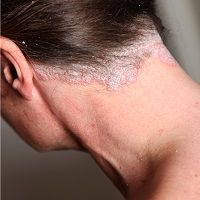Article
Cholesterol Efflux Capacity Predicts CV Risk in Psoriasis Patients
Author(s):
High levels of noncalcified coronary plaque and an increased risk for heart attack is linked to poor HDL-cholesterol efflux capacity (CEC) in patients with psoriasis.

High levels of noncalcified coronary plaque and an increased risk for heart attack is linked to poor HDL-cholesterol efflux capacity (CEC) in patients with psoriasis.
According to prior research, coronary plaque burden has long been linked with low levels of CEC.
Taufiq Salahuddin, Cardiovascular and Pulmonary Branch, National Heart, Lung, and Blood Institute, National Institutes of Health, Bethesda, MD, said, “There is strong biological plausibility for observing a relationship between CEC and [noncalcified plaque]; psoriasis is associated with both increased future [cardiovascular (CV)] events and impaired HDL function, and our findings suggest that this may be due to predisposition towards formation of noncalcified plaque.”
For the study, published in the European Heart Journal, a research team evaluated the efficacy of using CEC to measure CV risk in a total of 101 psoriasis patients.
Using coronary computed tomography angiography and assays, they were able to analyze the capability of plasma to mobilize cholesterol from lip-loaded macrophages.
Furthermore, blood sample analyses indicated that patients with poor HDL function possessed higher levels of coronary plaque.
It was interesting to note that women afflicted with psoriasis with lower CEC actually exhibited higher noncalcified plaque compared with the male patients.
According to the authors, “Our finding that non-calcified coronary plaque burden is inversely associated with CEC independent of HDL-concentration [P< .001] supports CEC as an important metric in understanding the relationship between HDL and coronary atherosclerosis.”





